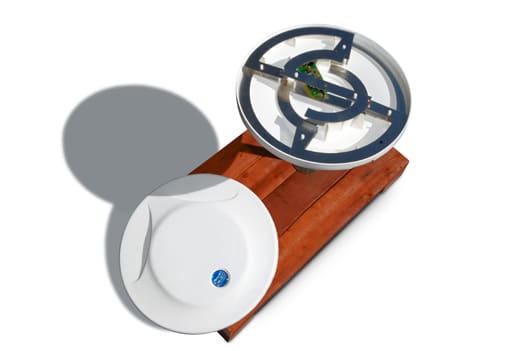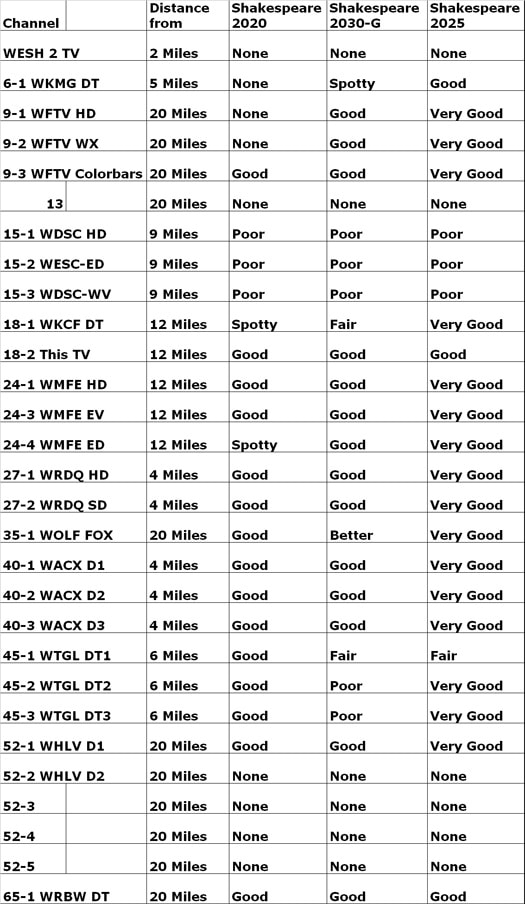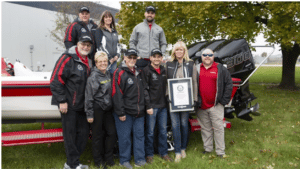As you can tell from the list below, reception issues because of the switch to digital TV are rampant. According to Don Henry, Director of Marine Product Group of Shakespeare, stations were not necessarily given signal strength comparable to their analog broadcast power and many stations still cannot broadcast to their original market. That may not seem like a big deal to a TV audience that relies almost solely on cable or satellite TV, but in truth, the key to free press and free speech is equal access to the airwaves. If you find similar gaps in your “air reception” of local television, Henry suggests you contact your station and discuss it with them. It will take some time to sort this out.
In the meantime, keep in mind our test was conducted with antennas set at just 7 feet 6 inches high under an asphalt shingle roof. While our tests showed inconsistent reception of broadcast waves from nearly the same areas, additional altitude on TV antennas can enhance reception as can moving the antennae outdoors. Additional antenna height can reduce or eliminate interference from structures and weaker broadcasts between the antenna and the broadcast source.
In our tests we also noted the antennas were omnidirectional, meaning you don’t have to turn them “toward the signal” to get better reception. We found this to be true. Rotating the antennas did not improve or degrade the signal — making these antennas nicely functional for boaters swinging on an anchor or moored at the dock.

We got curious as to what was inside these antennas, so we popped off the top of one.
It’s fairly simple, with circular reception elements and a built-in amplifier circuit board.
Each antenna was connected according to directions and worked beautifully, though limited by stations’ broadcast strength. The directions were clear and simple, and the only unexpected tool we needed was a sharp knife to remove the excess shielding at the score marks on the coaxial cable. Do this carefully by bending the cable and easing the blade into the scoring marks but not all the way through. Go too far and you nick the wires, impacting reception. Instead, bend the sheathing and score almost all the way through perpendicular to the cable, and it will break away and slide off the end of the cable. I really liked the twist-on cable connectors that allowed quick and easy installation without expensive crimping pliers.










